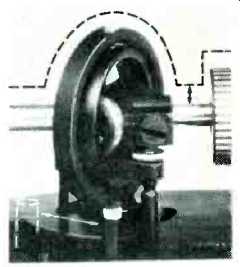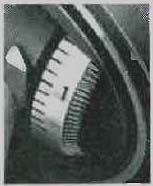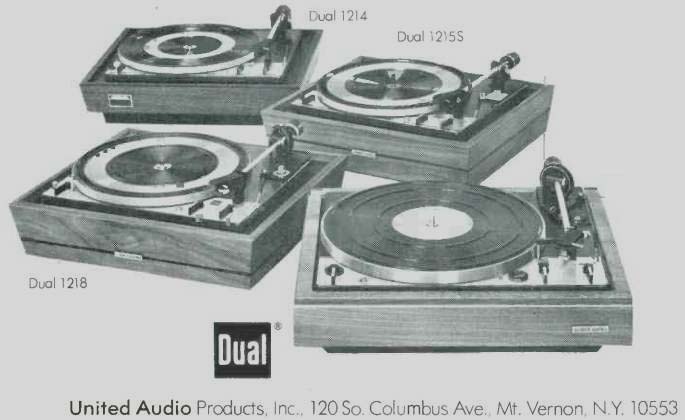Your records represent a major investment.
Does your record player protect it?
According to surveys by the major music magazines, the average music lover owns more than 200 records.
If you're typical, a little math will tell you that your record collection has already cost you over a thousand dollars. And will cost even more as you continue to buy records.
With that much money involved, it's certainly worth your while to consider how to protect that investment.
Especially since the soft vinyl record is so vulnerable to permanent damage from the unyielding hardness of the diamond-tipped stylus.
What can do the damage.
As soon as the stylus touches down in the groove, a running battle begins. The rapidly changing contours of the record groove force the stylus to move up, down and sideways at great speeds. To reproduce a piccolo, for example, the stylus must vibrate about fifteen thousand times a second.
The battle is a very uneven one. If the stylus can't respond easily and accurately, there's trouble. Especially with the sharp and fragile curves which produce the high frequencies. Instead of going around these peaks, the stylus will simply lop them off. The record looks unchanged, but with those little bits of vinyl go the lovely high notes.
It's all up to the tonearm.
Actually, no damage need occur. Your records can continue to sound new every time you play them. It all depends on the tonearm, which is to the stylus as the surgeon's hand is to the scalpel.
Basically the tonearm has just three jobs to perform. It must apply just the right amount of pressure to the stylus, keep this pressure equal on both walls of the groove, and follow the stylus without resistance as the groove spirals inward.
Today's finest cartridges are designed to track optimally at very low pressures (one gram or less). So you can appreciate how important it is for the tonearm settings to be accurate and dependable. And for the friction in the bearings to be extremely low.
Yet the difference in cost between a turntable with a precision-balanced tonearm and one with a less refined tonearm can be as little as $50. (The cost of only a dozen records.)
Dual: The choice of serious record collectors.
For these reasons and others, Dual automatic turntables have long been the choice of serious music lovers.
And for years, readers of the leading music magazines have bought more Duals than any other make of quality turntable.
We think these are impressive endorsements of Dual quality. But if you would like to know what independent test labs say about Dual, we'll send you complete reprints of their reports. Plus an article on what you should look for in record playing equipment.
Or, if you feel ready to invest in a Dual, just visit your franchised United Audio dealer for a demonstration. The dividends will start immediately.
How Dual protects your records.

The tonearms of the Dual 1218 and 1229 are mounted in gyroscopic gimbals,
the best known scientific means for balancing a precision instrument that
must remain balanced in all planes of motion.

Unlike conventional tonearms, the 1218 and 1229 track records at the original
cutting angle. The 1229 tonearm parallels single records; moves up to parallel
changer stack. In the 1218, a similar adjustment is provided in the cartridge
housing.

In all Dual models, stylus pressure is applied around the pivot, maintaining
perfect dynamic balance of the tonearm.

For perfect tracking balance in each wall of the stereo groove, separate
anti-skating calibrations for conical and elliptical styli are provided on
all Duals.

Also see:
Dual 1229 turntable (ad, Dec. 1972)
Dual 12xx turntables (ad, May 1973)
Dual 12xx turntables (Jul. 1973)
Dual 1249 turntable (Jan. 1976)
Dual Model 1249 Automatic Turntable (Equipment Profile, Feb. 1977)
Dual 1249 turntable (ad, Sept. 1975)
Dual CS 5000 Turntable and Ortofon X3-MC Cartridge (Nov. 1988)
= = = =